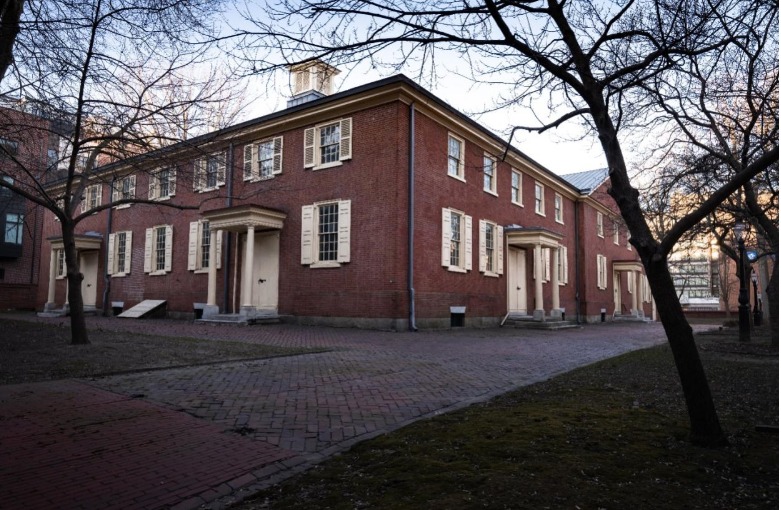 Authored by Mary Scott Nabers
Authored by Mary Scott Nabers
A less known and often overlooked federal program, the Historic Preservation Fund (HPF), continually provides millions in funding to support projects that upgrade, repair, or improve the sustainability of historic sites and facilities. The federal law that created the program and fund is the National Historic Preservation Act of 1966. There are other funding programs as well for historic projects and currently there are hundreds of these types of projects in planning stages throughout the country. Most will launch in 2024.
The HPF program allocates $150 million annually to provide grant funding to historic renovation projects. However, that amount is often increased significantly. It escalates when there is a need to preserve historic public assets after any type of disaster and often is increased for projects of high significance. Revenue from offshore oil and gas leases supports the program with funding and the National Parks Service oversees the administration.
Since its inception, grants to historic renovation or enhancement projects represent billions of dollars in all 50 states, the U.S. territories, and across more than 200 Native American tribes.
And since this program is just one of several that support projects that protect or preserve old public assets in America, there is an abundance of revenue available.
Projects similar to others currently in the design phase follow. And, for states that are not mentioned, it is important to know that individual states have their own agencies that contribute to projects of this type. That agency will be able to provide information about upcoming projects however they will be funded.
A $50 million project to redevelop a historic public housing facility is in the planning phase in Tucson, Arizona. A construction launch is scheduled for 2024. City officials were granted federal funding from the Choice Neighborhoods Implementation program which supports projects transform distressed neighborhoods and public housing into mixed-income neighborhoods. The project will include construction of a facility for assisted living. It will also include space for services, a health clinic, grocery store and café. Space for resident gatherings, an exercise area, and numerous other amenities will also be included.
A large renovation project in Amherst, Mass. will upgrade and expand the historic Jones Library. This project has a projected cost of approximately $44 million. It will include structural support, numerous internal repairs and expansion work to increase the size of the facility. The significant expansion effort will require work at both the exterior and interior of the building. The Jones Library was originally constructed in 1928 and is located within the city’s central business district. It is listed in the National Register of Historic Places. Currently in the design phase, a construction launch is slated for 2024.
Officials at Manitowoc County, Wisconsin will oversee renovation of the regional historic courthouse which was built in 1907 and has been on the National Register of Historic Places since 1981. Funding has been obtained and design work is underway and a projected cost of approximately $30 million has been announced. The 116-year-old county courthouse will require major structural repair, internal upgrades, new window replacements, new efficient energy and air conditioning systems, and restoration of the facility’s tower and dome.
The New York City Economic Development Corporation will release a Request for Proposals (RFP) very soon to identify a development partner to assist with redeveloping the historic Kingsbridge Armory. Tagged with a $200 million cost estimate, the project will redevelop the 570,000-square-foot armory and make it usable for business purposes. Current interest has come from film and TV firms, sustainable manufacturing companies, emerging technology start-ups, and urban agriculture interests. The project will also include developing dedicated space for community use such as vocational training, recreation, arts events, and health amenities. This initiative is on a fast track and interested developers should reach out immediately to stakeholders and board members.
The City Tempe, Arizona plans to renovate a pedestrian-friendly roadway and area which has long drawn tourism to the city’s downtown area. Many of the buildings on the street were constructed in the 1800s. The area has been recognized as a center of art and music for many years and the area with its vintage facilities attracts many visitors. No renovation or upgrades have been possible since the 1970s but that is about to change. A $20 million plan to renovate a half-mile stretch of roadway will be designed to make the area more welcoming to pedestrians and visitors. The project will expand and repair sidewalks, add decorative lighting to the street, add amenities of various types, and increase tree cover for shade. To preserve the historical aesthetic of the area, this project will call for reusing aspects of the existing brick paving, the creation of rest areas that resemble “urban living rooms,” and construction of a gateway monument to welcome visitors.
Most economic development organizations in cities and counties of every size and location are continually interested in partnering to develop historic sites in their region. Now is one of the best times ever because of available funding and the country’s very high interest in sustainability, job creation, and economic stimilus.
Mary Scott Nabers is CEO of Strategic Partnerships, Inc.(www.spartnerships.com) and the author of Inside the Infrastructure Revolution – A Roadmap for Rebuilding America.



